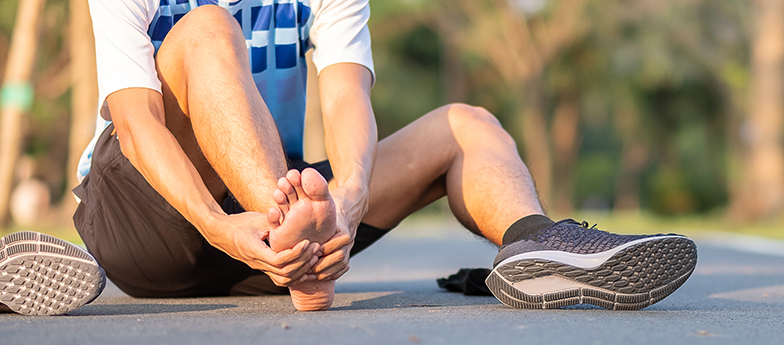Rheumatoid Arthritis is an autoimmune disease that affects the immune system, tasked with protecting our health by attacking foreign substances. For people with RA, the immune system attacks the joints, mistaking them with a potential threat of bacteria or viruses. These attacks create inflammation that, in turn, makes the tissue that connects the inside of joints (synovium) expand. This results in swelling and pain and, if said inflammation is not treated it can damage the cartilage covering the ends of bones in a joint.
Our feet
The human body possesses over 52 bones, 66 joints, and more than 200 muscles, tendons, and ligaments just in the feet. All of these parts work together to support our skeleton and provide balance and mobility but affected by a condition like RA, they produce an almost unbearable pain that can cripple and invalidate the life of the patient.
Taking healthy options for your feet can add up to big improvements in quality of life. To help keep you on your feet comfortably, take into consideration what pair of shoes you want to use.
High Heels: Physicians have a low opinion of high heels higher than 2 inches, as they are bad for everyone’s feet not only those suffering from arthritis
Low Heels: Same problems but to a lesser degree. These shoes up the position of the toe, increasing the discomfort. Doctors recommend wider low-heeled shoes with plenty room for the feet to reduce joint pain.
Sandals: For people with arthritis in their lower extremities sandals with more support are the go-to option.
Athletic Shoes: Depending on your condition, stability sneakers have a denser, cushioned midsole that helps control motion and maintain optimal weight distribution and shock absorption of the foot. Neutral sneakers offer good shock absorption and cushioning, typically allowing the use of custom-molded orthotic prescribed for patients with arthritis.

Clogs: Not recommended as an everyday shoe for people with arthritis, for their arch has effects on toes, ankles or other foot joints.
Boots: They can be a healthy option for people with ankle arthritis issues, especially those with more stable rubber-soled wedged heels or flatter with good arch support.
Treatments
There’s a wide arrange of treatments for Rheumatoid Arthritis and, depending on the symptoms presented by the patient, they’re applied to ease the pain, slow the disease, stop it altogether, or inhibit structural damage to the joints.
Medication: Anti-inflammatory drugs, both steroidal and nonsteroidal, are accessible over-the-counter or by prescription. They are used mostly for pain and inflammation, although some disease-modifying antirheumatic drugs, such as cyclophosphamide and azathioprine, work to modify the course of the disease.
Kinesiotherapy: It’s the therapeutic treatment of arthritic diseases by exercising the affected joints. Physiotherapy and physical therapy play a great part in this kind of procedure.
Thermotherapy: Heat therapy consists of the use of heat during physical therapy using a hot cloth, hot water bottles, or ultrasound. It’s mostly performed in patients with severe stiffness in the muscles and deep in the tissue of the skin.
Magnetotherapy: A pseudoscientific alternative medicine practice, it involves the use of static magnetic fields produced by permanent magnets. It can have beneficial health effects according to its practitioners
Cryotherapy: Whole-body cryotherapy has been used for many years as a supplement in the rehabilitation of RA patients. However, there are only a few studies made and the effectiveness of this method remains in debate.
Surgery: For some patients, surgery may never be needed, but it is important to still see it as a viable option for people with extensive damage. Specialized joint-replacement surgeries can stop the pain and restore function in badly damaged joints, with some procedures involving completely replacing damaged Sections with metal and plastic parts.
SOURCE: https://www.everydayhealth.com/rheumatoid-arthritis/living-with/the-best-shoes-for-rheumatoid-arthritis/









